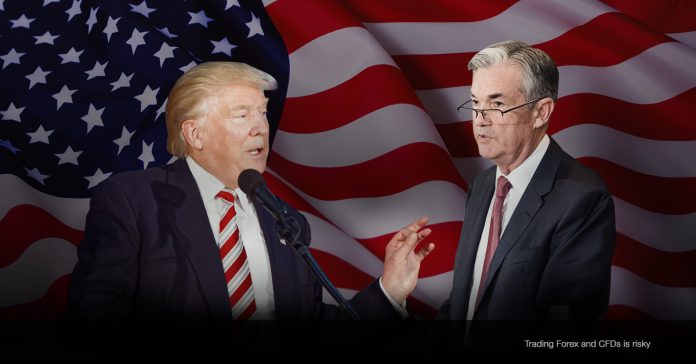The Fed surprised many yesterday by assuming a more-dovish-than-expected stance, effectively removing the possibility of a rate hike in 2019, but allowing for some rate increases in 2020. The Fed suggested that there is no longer a need to move rates to a restrictive level after downgrading their forecasts for US growth, unemployment and inflation.
The Fed’s decision was justified given the dynamic nature of monetary policy. At the moment, the economy is trying to adjust itself to the shock caused by the trade tariffs imposed by the Trump administration, which we had commented about being the major worry of the US economy last October. As long as this adjustment period is going on, monetary policy cannot hurdle growth and thus the pause was more than justified, based on the prevailing market conditions.
The Trump administration, through the imposition of tariffs, indirectly arm-twisted the Fed to pause its rate hike plan, while still respective the Fed’s independence by not directly intervening in the interest setting process. The expected short-run negative effect on the economy from the tariffs pushed the Central Bank away from its normalization policy, given that the Fed is bound to react to changes in the macroeconomic environment. Maintaining interest rate stability is something that the Trump administration was fully backing, eager to maintain low borrowing costs so as to fund the growing US government debt.
Given that the excess spending has to be somehow detained, President Trump tweeted, soon after the Fed announcement, that his administration is considering maintaining the China tariffs for a “substantial period”. Tariffs appear to be working the way the Trump administration more or less imagined: custom duties nearly doubled in 2018Q4 compared to 2017Q4, increasing by roughly $33 billion.
Tariffs, despite the negative effect they can have on the local economy given the upwards price pressure they place on the market, were well-placed on China, if the aim was to generate income. Given that the US accounts for about 19.2% of total Chinese exports, it could be enough to grant them with monopsony power. Widely accepted by economic textbooks, monopsony power allows a country to gain enough from the exporters’ absorbance of the tariff into their prices in order not to lose much market share. Thus, the pledge that “foreigners will pay” appears not to have been so misplaced after all. Furthermore, tariffs would also be good for US companies manufacturing the same goods as the Chinese ones targeted.
Even though the extra revenue is important, it is still not enough to cover the extra $44 billion in interest that the US government had to pay during 2018. However, given that interest rates are expected to remain stable during the year, as per the Fed communication, there is no question that the only change in US interest payments is expected to come from additions to the already huge US government debt, standing at $21.5 trillion dollars, based on the latest available data.
All of the above could easily work as a re-election tool for Donald Trump: the economy is growing, he effectively stopped the Fed from raising interest rates as a result of the tariffs imposed by his administration, something which would also push the economy higher or at least lower the impact from the trade tariffs and grant him more bargaining power in the China talks, he cut taxes, government spending increased, and he will likely claim that he made foreigners pay for a majority of all these things, through tariffs.
Like him or not, it seems like Trump got what he wanted, even though the trade war policy cannot be sustained in the long run.
Click here to access the Economic calendar
Dr Nektarios Michail
Market Analyst
HotForex
Disclaimer: This material is provided as a general marketing communication for information purposes only and does not constitute an independent investment research. Nothing in this communication contains, or should be considered as containing, an investment advice or an investment recommendation or a solicitation for the purpose of buying or selling of any financial instrument. All information provided is gathered from reputable sources and any information containing an indication of past performance is not a guarantee or reliable indicator of future performance. Users acknowledge that any investment in FX and CFDs products is characterized by a certain degree of uncertainty and that any investment of this nature involves a high level of risk for which the users are solely responsible and liable. We assume no liability for any loss arising from any investment made based on the information provided in this communication. This communication must not be reproduced or further distributed without our prior written permission.



















